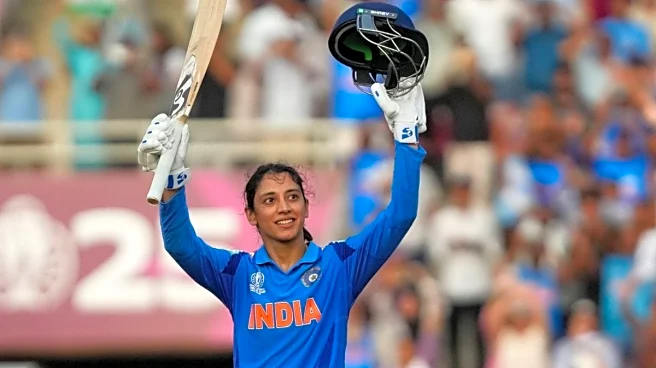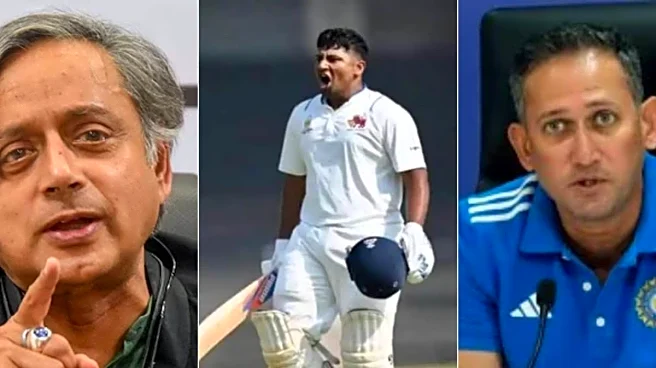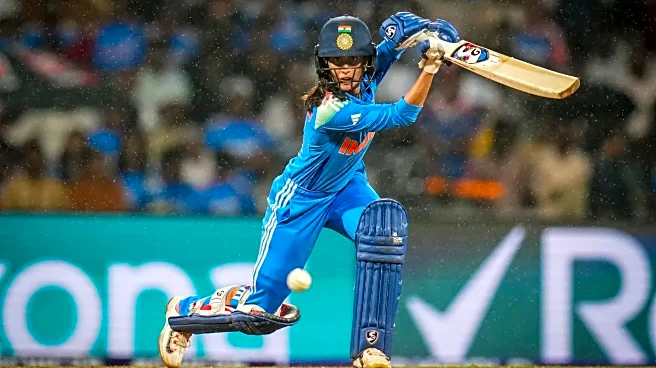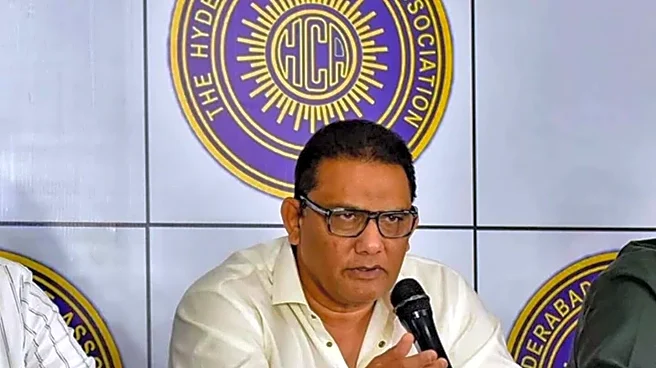Picture this: a young lad in Hyderabad, bat in hand, swishing and sweeping, chasing the leather against leather, dreams in his eyes. Fast-forward a few decades: he strides into the stately precincts of
the Raj Bhavan in Hyderabad and takes oath as a minister in the state of Telangana. The journey of Mohammad Azharuddin is exactly that kind of dramatic arc—sporting heights, scandalous lows, political repositioning, and now a new chapter. On 31 October 2025, Azharuddin was sworn in as a minister in the Telangana Cabinet, a move that has thrown plenty of interest, intrigue and eyebrows in equal measure. Why does this matter, beyond just a name in a list of ministers? Because this is a man whose resume covers cricket pitches and parliamentary benches, who bore the weight of national expectation, who was once banned for life (yes, lifeline revoked), and yet now re-emerges in public life in a high-visibility role. There’s the sporting legend, the controversy magnet, the political hopeful—and now the minister. In short, Azharuddin’s story ticks nearly every dramatic box. This article takes you through his early life, career highs and lows, family and relationships, assets and cars, and finally how he got here. So settle in: there’s a lot to cover.
Mohammad Azharuddin Early Life: Roots in Hyderabad, Bat in Hand
Born on 8 February 1963 in Hyderabad to Mohammad Azizuddin and Yousuf Sultana, Azharuddin’s story begins in a city with a rich cricketing tradition. He attended All Saints High School and then went on to graduate from Nizam College, Osmania University, with a Bachelor of Commerce degree. His maternal uncle, Mir Zainulabiddin (captain of Osmania University), and a Brother K. M. Joseph from his school days were strong early influences.
A fun fact: Azharuddin began his cricketing life not as a blaster of batting shots but as a seam bowler—yes, the nosedive from leather to leather begins with a bowl, not a bat. Later his batting prowess took centre stage. In the 1981-82 Ranji Trophy season, aged 18, he made his first-class debut for Hyderabad. Why does all this matter? Because these early years set the context for how a teenager from Hyderabad becomes one of India’s most stylish middle-order batters. And style—both on and off the field—was always going to matter.
Mohammad Azharuddin Cricketing Career: Centuries, Captaincy & Chaos
Debut, Rise & the Big Shots
On 31 December 1984, Azharuddin made his Test debut for India against England—and scored a century in his first innings. He followed it up with more centuries in his next two Tests, making history by becoming the first player to score three centuries in as many Test matches. His One Day International (ODI) debut came on 20 January 1985 at Bangalore; he made an unbeaten 47. Across his Test career he played 99 matches, and in ODIs 334—all in an era before Twenty20, when one’s batting style was under different pressure and scrutiny.
Captaincy & Highs
In 1989, Azharuddin succeeded Krishnamachari Srikkanth as captain of India. Under his captaincy, India won the Asia Cup in 1990–91 and again in 1995. In the 1996 World Cup India reached the semi-finals under his leadership. One of his most memorable knocks: in 1990’s England tour, he made 121 at Lord’s; a former England cricketer called it “the most dazzling Test century” he’d seen. Another highlight: in a Test in Kolkata, he scored a rapid century (74 balls) equalling Kapil Dev’s Indian record at the time.
The Abrupt End
But the fun run came to a sudden halt in 2000. Azharuddin was implicated in a match-fixing scandal during India’s tour of South Africa; the Board of Control for Cricket in India (BCCI) imposed a life ban. After years of legal battle, in 2012 the Andhra Pradesh High Court lifted the ban. Cricket aficionados still debate the what-ifs: what if the ban had not happened; how his career might have tilted differently. But that is history now.
Political Curve: From MP to Minister
After cricket, Azharuddin pivoted into politics. In 2009 he joined the Indian National Congress (INC) and was elected Member of Parliament from Moradabad in Uttar Pradesh. In 2018 he was appointed working president of the Telangana Pradesh Congress Committee (TPCC). Then, on October 31, 2025, he was sworn in as a minister in the Telangana Cabinet. His induction is significant for two reasons: one, it gives the Telangana government its first Muslim minister from the Congress side in that term. Two, the timing and constituency (the bye-poll at Jubilee Hills, Hyderabad) have triggered political chatter about electoral strategy.
Fun fact: Azharuddin himself dismissed suggestions that his appointment had to do with the bye-poll, saying it was a separate matter altogether. Whether this marks the start of a long ministerial career or simply a momentary shift remains to be seen—but it certainly gives the former cricketer a new lease of public life.
Mohammad Azharuddin: Family, Relationships & Personal Life
Azharuddin’s personal life has been as eventful as his professional one. He married Naureen in 1987; they had two sons: Mohammad Asaduddin and Mohammad Ayazuddin. In 1996 he divorced Naureen and married actress Sangeeta Bijlani. Tragedy struck in 2011 when his younger son Ayazuddin died in a bike accident. His elder son, Asaduddin, plays domestic cricket; he married Anam Mirza (sister of tennis star Sania Mirza) in 2019. There have been public rumours of affairs and controversies around his personal life (for example with badminton player Jwala Gutta), though Azharuddin has not made them centre stage. All in all, if his cricketing life had style, his personal life had drama—and both have shaped the public’s perception of him.
Mohammad Azharuddin: Assets, Houses & Cars—The Stylish Side
Style and luxury have long been part of Azharuddin’s persona—even during his playing days. His asset base, as of recent estimates, is around ₹16–17 crore (≈$2 million). His total assets are reported about ₹18.95 crore. He owns residential properties in Hyderabad (a flat in Nest Apartment, Erram Manzil Colony) and Mumbai (flat in “Wits End” building, Bandra West). He also has lived in Jubilee Hills, Hyderabad.
Mohammad Azharuddin Cars (According to a 2014 affidavit)
BMW 650 (2011 model)Honda CR-V (2008 model) Earlier he owned a silver Mercedes convertible (sold around 2002 it is reported). His son Asaduddin owns a Range Rover and an Innova. In July 2020 there was a social-media post about a Mercedes-Benz GLE43 AMG being delivered to him.
Fun fact: A cricketer-turned-minister driving a high-end SUV is something the tabloids note with relish—“From cover-drive to car-drive,” one might title it.
Mohammad Azharuddin: Net Worth & Income Streams
As mentioned, net worth is estimated at approx ₹16–17 crore, with assets around ₹18.95 crore. Previously, around 2014, reports placed his assets at about ₹9.73 crore. Income sources: his cricket career (international and domestic), endorsement deals, business ventures, a pension from the BCCI, and now political salary. It’s interesting to note how athletes transition into politics or business—and how their earning power shifts accordingly. Azharuddin’s wealth is modest compared to some sporting stars of later eras, but the nuance is that these are not purely money-stories—they are also public-image stories.
Mohammad Azharuddin Controversies: The Match-Fixing Saga & More
No article on Azharuddin would be complete without the shadow of scandal. In 2000, during the South Africa tour, a match-fixing scandal erupted. Azharuddin was banned for life by the BCCI based on the CBI report. The ban was lifted in 2012 by the Andhra Pradesh High Court. The scandal remains a stain—but also a point of curiosity: how did someone who once led the national team with such flair end up banned? And how did the journey from ban to political office occur? It adds a dimension of redemption (or re-entry) to his story—depending on how you view it. With his oath on 31 October 2025, Azharuddin joins the state’s ministerial ranks at a notable moment. His induction marks: The first Muslim minister in the current Telangana Congress government. A strategic addition ahead of a bye-poll in Jubilee Hills, where Muslim voters form a significant chunk. A somewhat symbolic move: A sporting hero turned politician, given a chance to recast himself in public life. What portfolio he will receive remains to be confirmed—but sources suggest sports or minorities welfare could be in contention. In short: the ministerial role is more than just a title—it’s a pivot point in his ongoing post-cricket saga.
Fun Facts to Keep You Smiling
- When Azharuddin scored three centuries in three Tests at the very start of his international career, he joined an exclusive club. - He once scored 199 batting for India against Sri Lanka in 1986—very nearly a double-century. - His nickname “Azzu” is used affectionately by teammates from his early years. - In his ministerial oath speech, he reportedly wished success to both the Indian men’s and women’s cricket teams—possibly his way of tying his past and present. - He changed bowling to batting early in his career—a pivot of skill that pays tribute to how adaptable he was.
Mohammad Azharuddin: A Career in Three Acts
If we were to divide Azharuddin’s life into acts:
Act I: The meteoric rise – school cricket in Hyderabad, first-class runs, Test debut century, captaincy.
Act II: The tumble and transition – match-fixing ban, exit from five-star batting, search for new identity.
Act III: The reinvention – politics, public office, ministerial oath, new chapter. Whether one sees it as redemption, reinvention or simply the next phase of a long public life, Azharuddin’s journey remains compelling. The man who once swished drive after drive on cricket fields is now navigating the corridors of power. And because life rarely hands out neat endings, this part of the story might be the most interesting yet.So, keep an eye on Minister Azharuddin. The bat metaphorically is put away—now comes governance, representation and politics. And you know, sometimes the longer the journey, the better the story.

/images/ppid_a911dc6a-image-176191683558212175.webp)




/images/ppid_a911dc6a-image-176185243289883195.webp)






